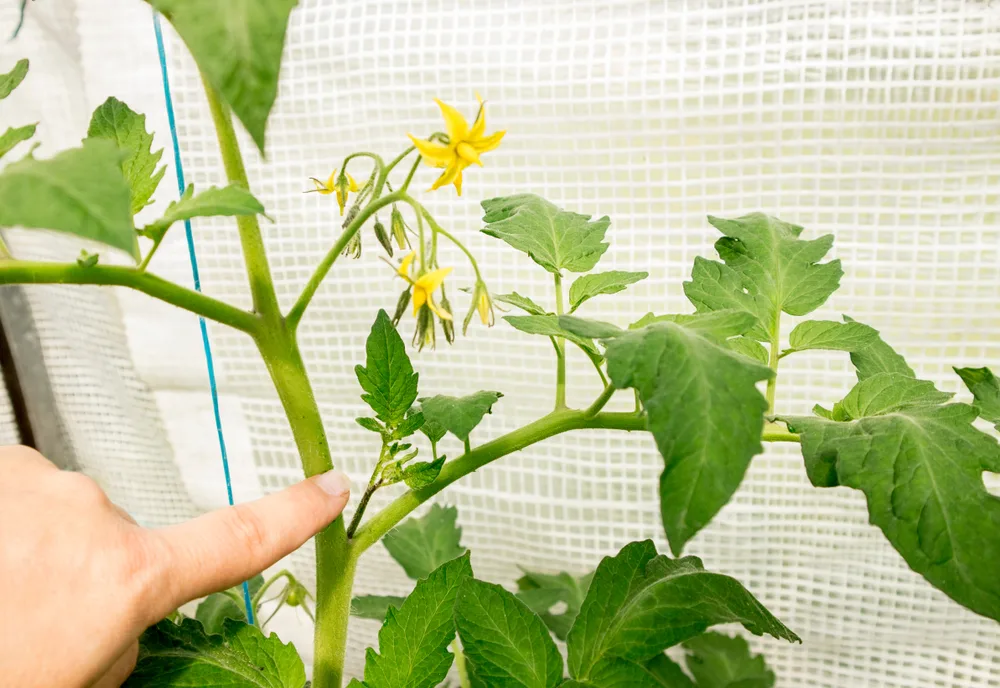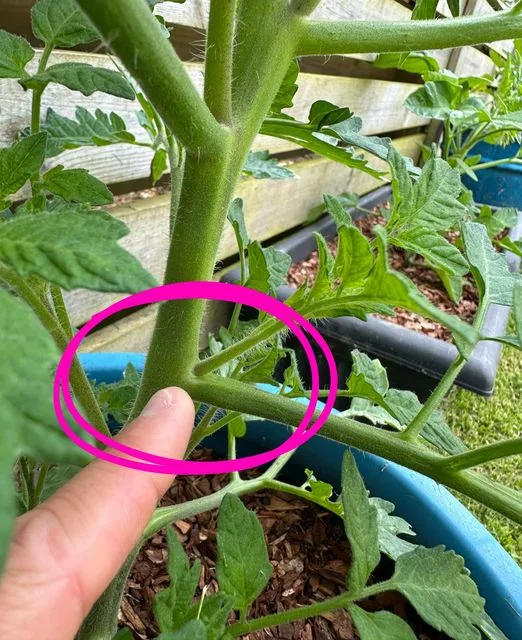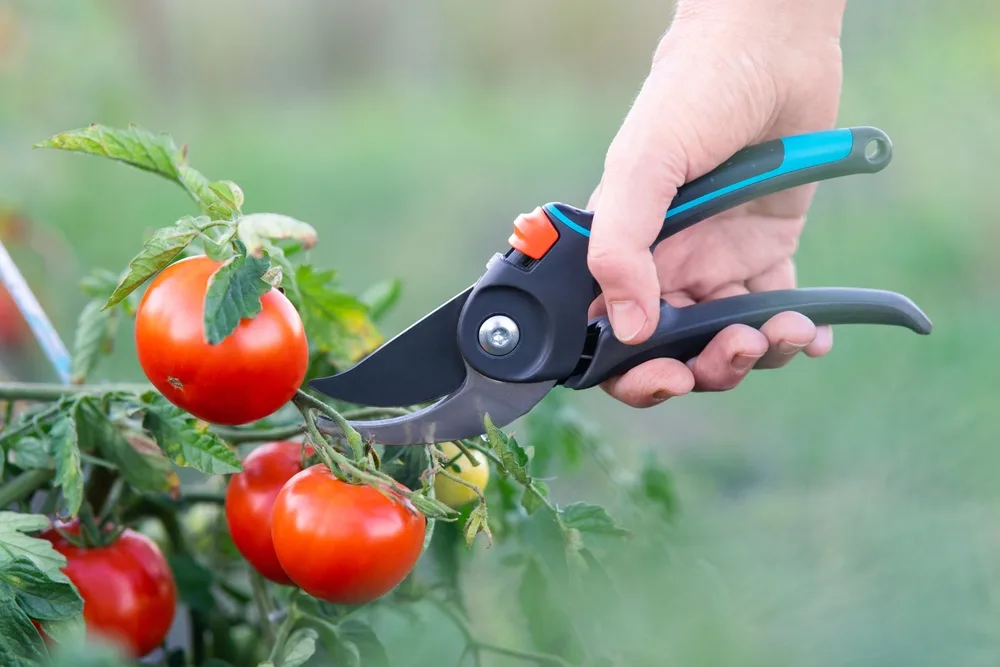
Gardeners have long been advised to eliminate tomato suckers to enhance plant productivity. This pruning practice is deeply rooted in tradition and has been passed down through generations.
The central question remains: do tomato suckers truly detract from the plant’s energy and yield? A closer examination of this common gardening advice is necessary to determine its validity.
What is a Sucker?

Tomato pruning practices often mention the removal of suckers. Contrary to popular belief, these so-called tomato suckers are not genuine suckers.
Clarifying Tomato Suckers
True suckers arise from the ground at the base of trees and shrubs, drawing energy away from the main plant. These should be removed regularly.
Tomato suckers, on the other hand, are side stems that can bear fruit and flowers akin to the primary stem. While removing them might seem necessary, understanding their true nature is essential for proper gardening.
But isn’t it taking away energy from the plant?
Wherever there are leaves, the plant makes its own energy
Each new stem is fully self-sustaining because leaves on the stem generate energy through photosynthesis.
The plant adjusts its growth based on the capacity of the root system, particularly when tomato plants are buried deeply or horizontally. If a tomato plant is producing many new “suckers,” this indicates a healthy plant.
This growth shows that the plant is thriving and is a positive sign. The better question to ask is whether the growing season is long enough for all these new suckers to produce fruit.
How to Effectively Prune a Tomato Plant

Establish the Right Groundwork for Seasonal Success
Regardless of the tomato variety, it’s essential to carry out initial pruning near the plant’s base. When the plant reaches about a foot in height, trim the new growth within the first 4 to 6 inches along the main stem to ensure good clearance from the ground.
This practice helps in warding off soilborne diseases by keeping the leaves away from the soil, thereby reducing the risk of contamination.
Distinctions Between Pruning Bush and Vining Tomatoes
Tomatoes come in two main types: determinate, also known as bush varieties, and indeterminate, commonly referred to as vining varieties.
Pruning Strategies for Bush Tomatoes
Bush tomatoes, typically hybrids, grow to a predetermined height and then produce their fruit all at once. This trait makes them particularly suitable for canning due to a concentrated harvest period. After the initial fruiting, these plants generally die off.
Given their finite growth and yield, pruning should be approached cautiously. Excessive pruning can reduce the overall number of tomatoes.
Minimal pruning is required, possibly removing an occasional side shoot to enhance light and air penetration within the plant.
In regions with shorter growing seasons, more aggressive pruning may be necessary.
When growing close to the first frost date, it’s beneficial to remove new growth after the plant has set fruit. This ensures that the plant’s energy is directed towards developing fruit rather than new, potentially non-productive flower clusters.
Pruning Techniques for Vining Tomatoes
Vining tomatoes are significantly different from bush varieties. They are more similar to their native cousins in South America and can quickly overrun a garden if not properly managed. These varieties continue to extend in length and width, bearing fruit along the entire stem, making regular pruning and support essential.
Understanding the growth pattern of indeterminate tomatoes is crucial for effective pruning. Flower clusters form above a leafy stem, and a new stem, often referred to as a “sucker,” develops at the leaf’s crotch above the flower cluster. These suckers will continue to grow leaves and form new flower clusters.
Pruning advice often stems from the need to control these suckers. Left unpruned, the plant can become overly dense and impose on garden space.
Regular pruning, beginning at the season’s start and continuing every one to two weeks, helps direct the plant’s energy into fruit production.
When deciding what to prune, assess the plant’s overall structure. Aim to avoid any areas with foliage so dense that the center of the plant isn’t visible.
Prune any new stems or suckers that are:
- Blocking other flower clusters from getting enough light.
- Crowding a section of the plant and restricting light and airflow.
- Rubbing against a more established stem, which can cause damage.
As the plant grows, it will continue to produce new flower clusters above the ones already producing fruit. During mid-summer, the lower leaves typically start to wither and fall off. Removing these early can encourage the plant to focus on new growth higher up, maintaining a healthy and productive tomato plant.
Pruning Espaliered Tomatoes
Reducing Growth at Season’s End for Indeterminate Types
As the growing season concludes, it is essential to halt new growth so the plant can focus on ripening its existing fruit. This process should ideally commence around four weeks before the anticipated first frost.
Steps for Pruning:
- Trim the top of the main stem to halt vertical growth.
- Be aware that this may trigger side growth from the existing stem.
- Remove all suckers immediately to prevent additional growth.
Adopting these practices will minimize the number of unripened tomatoes at the season’s end. If there are still green tomatoes, there are numerous recipes available to make the most of them.
